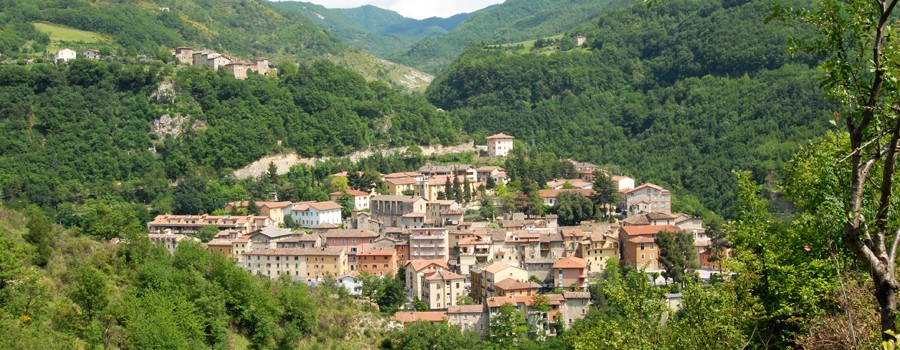Acquasanta Terme is a spa location famous for its iodine-sulphur thermal springs, which flow from natural tunnels known since Roman times.
In addition to the sulphurous waters, Acquasanta owes its wealth to the quarries of travertine, a precious building material widely used in the Piceno district, which characterizes the Acquasanta area, not only in appearance (most of the housing is made of this material) but also in production traditions – the town is still very much involved in travertine processing, both for industrial applications and for artists and artisans.
In the old part of the village we find the church of Santa Maria Maddalena, chosen by Farfa Abbey in the fourteenth century, and the parish church of San Giovanni Battista, of Medieval origin but completely rebuilt at the end of the nineteenth century.
Acquasanta municipal territory covers 138 square metres at altitudes ranging from 200 to 2,000 metres, and comprises 50 charming hamlets that, in some cases, lie within the Monti della Laga National Park.
From the central town we gradually move out towards a landscape that becomes more rugged and truly mountainous, brimming with incredible historical and artistic heritage. Without doubt worthy of a visit are the picturesque Quintodecimo, during Christmas the setting for a splendid exhibition of nativity scenes; Tallacano, a village carved out of sandstone and travertine, known as the “Peschici of the Apennines” for its resemblance to the Gargano resort; Castel di Luco, a curving fortress that seems to be moulded from the morphology of the rock on which it is perched.
At Valledacqua we can visit the thirteenth-century abbey of San Benedetto with adjoining monastery, built by Benedictine monks of Farfa Abbey in about 970. The building, restored in 2001, was built in the white travertine typical of the Acquasanta area, and still has its Renaissance frescoes. Its characteristic play of light and shadow emphasizes the extraordinary mystic atmosphere of the site.
In Paggese the charming narrow lanes lead to the church of San Lorenzo, built in 1275 by Cistercian monks, and home to a triptych by Pietro Alemanno. The hamlet of Villa Piedicava, with its typical sixteenth-century houses, is surrounded by beautiful unspoilt countryside with the Mulino di Piedicava, an ancient water mill still in operation that allows us to experience some fascinating episodes of local rural history.




















